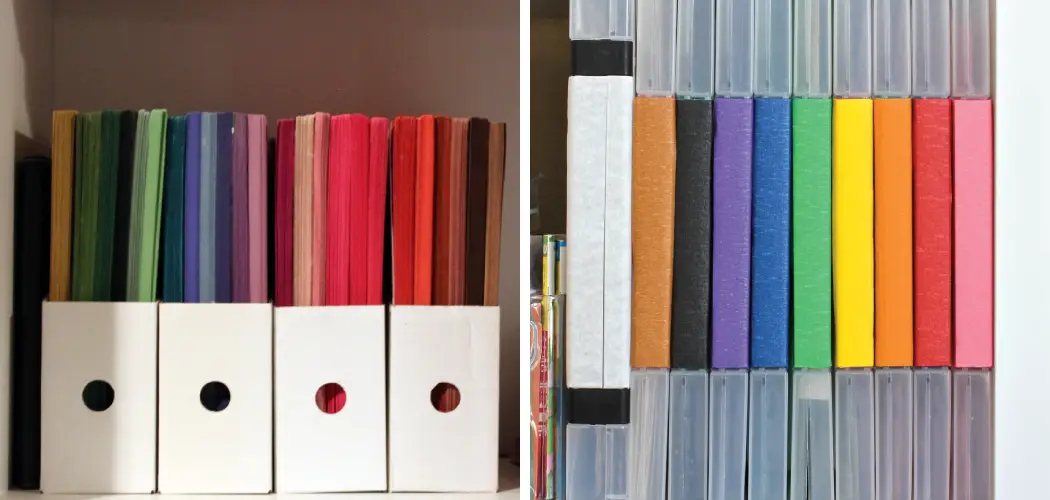Construction paper crafts evoke a world of vibrant colors and boundless creativity—an essential staple for artists, educators, and children alike. The flexibility and diversity of construction paper allow for a wide range of artistic expressions, from simple classroom projects to intricate art pieces. However, the joy of crafting is often met with the challenge of organizing and preserving these large, colorful sheets.
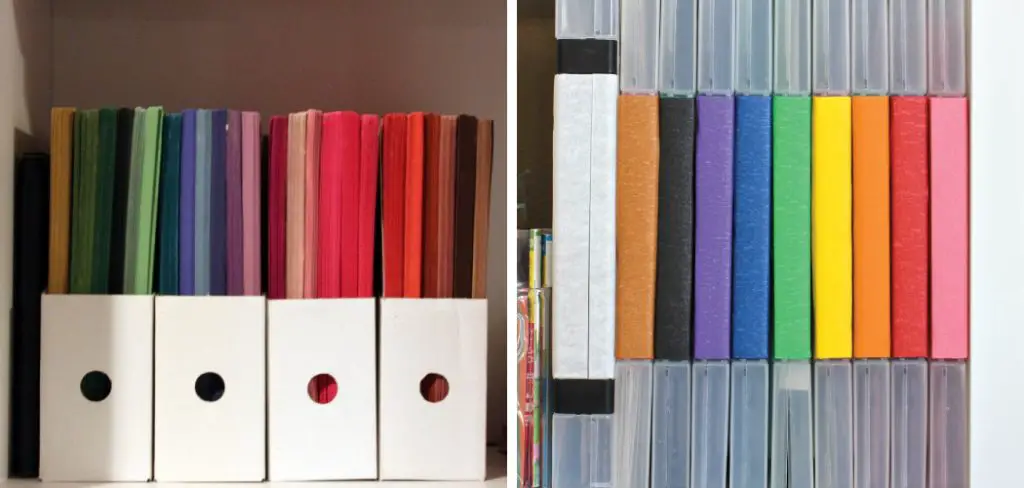
As this comprehensive guide will demonstrate, there’s a myriad of innovative and practical storage solutions waiting to be explored, promising to keep your crafting space orderly and your paper accessible and pristine. Keep reading to learn more about how to store construction paper.
Understanding Your Construction Paper Needs
Before diving into storage solutions, it’s crucial to consider the dimensions of your construction paper. Standard sizes typically measure nine by 12 inches, are suitable for most projects, and are easy to store in traditional filing systems. In contrast, oversized sheets maybe 12 by 18 inches or larger, necessitating specialized storage options with more space. The frequency at which individuals use construction paper can also dictate storage needs. Children might access it daily, requiring low, open bins for easy reach, whereas educators might prefer organized cabinets for occasional classroom use. On the other hand, artists might need a storage solution that allows their paper to be showcased for inspiration.
Environmental factors pose potential fears in long-term paper preservation. Dust accumulation can dull the vibrant colors of construction paper, so closed storage or proactive cleaning routines are invaluable. Likewise, moisture threatens the paper’s integrity, making dry environments imperative for storage. Lastly, natural and artificial light can fade colors over time and weaken the paper’s structure; sunlight can also increase the risk of yellowing or brittleness. Protective measures against crushing are necessary, too, as heavy objects can irreversibly mar the smooth surface, thus compromising future artwork.
How to Store Construction Paper – Smart Storage Solutions
Classic Storage Solutions: Tried and True
Classic storage solutions stand the test of time for crafters seeking reliable methods to organize their construction paper. Sturdy shelves offer an excellent option for those looking to store flat stacks of paper in an orderly fashion. The selection process is simplified by categorizing the sheets by color or size and contributes to a visually appealing arrangement. Vertical dividers within these shelves can maximize space and prevent the papers from toppling over, keeping them crisp and ready for use.
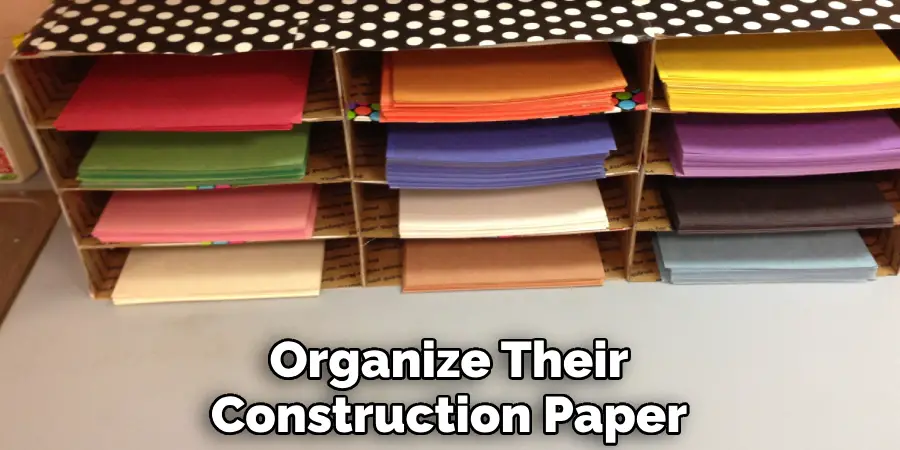
Labeled plastic bins complement shelving units by providing a system to manage smaller quantities of paper or to segregate sheets designated for specific projects. These bins can easily be stacked, ensuring a tidy and efficient use of space. Moreover, transparent bins are particularly beneficial as they allow for quick identification of their contents, saving time and effort in locating the desired paper. For added convenience, integrating vertical organizers such as magazine holders or office in-trays on the shelves can offer an immediate grab-and-go option for popular or frequently used paper sizes.
These traditional storage methods maintain the quality and longevity of construction paper and enhance the user’s experience by creating an environment of ease and accessibility. Whether in a classroom, studio or at home, blending the sturdiness of shelving with the practicality of labeled bins and vertical organizers sets a foundation for an effective paper storage system that can evolve along with the crafter’s needs.
Creative Storage Ideas: Thinking Outside the Box
Crafters and educators looking to infuse their spaces with unique styles while meeting their storage needs can turn to upcycled containers. Repurposed crates, boxes, or wine racks can be transformed into charming and functional storage solutions. Decorating these items with paint, fabric, or decoupage allows for a personalized touch that can brighten any crafting space. When using cardboard containers, consider lining them with plastic or a protective coating to safeguard against moisture, which can compromise the paper’s integrity.
Wall-mounted organizers are another innovative storage approach that uses vertical space, often underutilized in craft areas. Fabric hanging organizers, or wall pockets, can store and display construction paper within easy reach, providing both decoration and functionality. Pegboards with adjustable shelves or clips provide flexibility for holding various paper sizes. However, it’s critical to follow installation guidelines and to be mindful of weight limitations to ensure these solutions are both safe and sturdy.
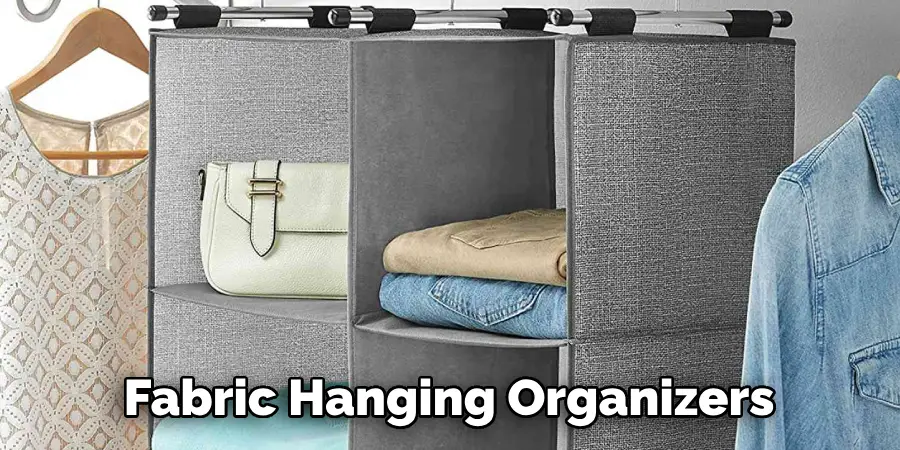
For those with a flair for DIY, building custom shelving units from scratch or repurposing old furniture like dressers with flat drawers can reflect personal style and meet exact storage specifications. Basic woodworking projects, such as creating a paper sorter from slats of wood or using simple stacking boxes, can lead to a completely tailored storage system. Embracing DIY projects fulfills specific storage needs and adds a sense of accomplishment to the creative space. Remember, prioritizing safety during construction and ensuring easy functionality in everyday use are paramount when pursuing these DIY solutions.
Special Considerations for Children and Classrooms
Tailoring storage solutions to the enterprise of young crafters is essential for fostering a safe and empowering environment. Child-friendly storage must be within easy reach; thus, low shelves that children can access without the need for climbing or assistance are pivotal. It is also beneficial to utilize labeled bins and colorful organizers, which not only aid in the quick identification of materials but also add to the visual appeal of the crafting area, potentially stimulating creativity and interest in the learning process.
In classroom settings, mobility adds a versatile edge to craft storage. Rolling carts provide adaptable solutions, allowing for the easy transition of supplies between activity stations. Tote bags also offer portable utility, particularly for distributing individual project materials to students or when reconfiguring the workspace for different activities. To facilitate easy maintenance of these storage systems, labeling each cart or bag can save precious teaching time and promote self-guided access for the children.
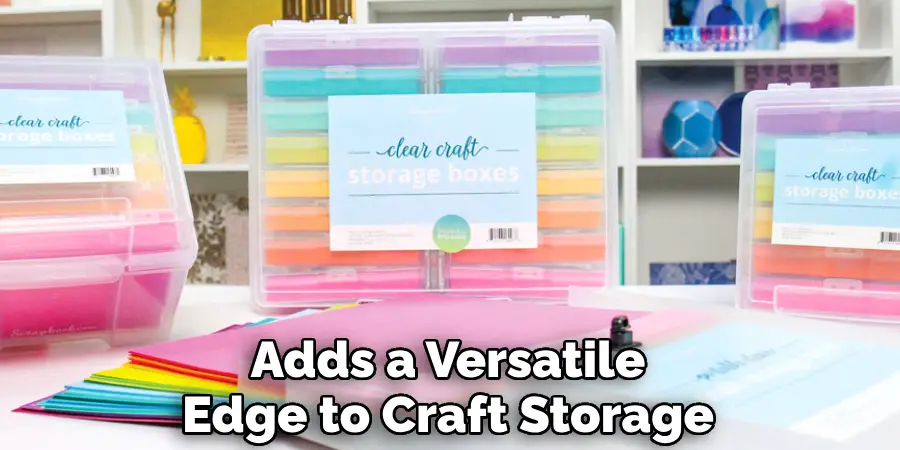
Organizational strategies should be simple and clear, enabling young students to participate in clean-up and paper selection. Regular decluttering sessions can prevent the accumulation of scraps and unused materials that often lead to chaos. Educators can involve students in these processes, instilling organization skills and a sense of responsibility over their crafting materials. These practices ensure that craft paper supplies remain manageable and that the creative process remains joyous and unimpeded by disorder.
That’s it! You’ve now learned how to store construction paper efficiently and effectively, whether for your personal projects or in a classroom setting. Remember to evaluate the specific needs of your space and users, incorporate both classic and creative storage solutions, and prioritize safety and functionality. With these tips in mind, you can create an organized crafting area that promotes creativity, accessibility, and enjoyment.
Keeping Paper Pristine: Protection from Dust and Damage
Preserving the vibrancy and integrity of construction paper is crucial in extending its usability; however, environmental factors such as dust, moisture, and direct sunlight can significantly deteriorate paper quality over time. Dust accumulation can lead to a dull surface and a degraded feel, diminishing the paper’s aesthetic appeal. Moisture is an equally formidable adversary, capable of warping paper and facilitating the growth of mold and mildew, which can ruin entire stacks. Moreover, prolonged exposure to sunlight can cause construction paper to fade, making colors less vivid and the material brittle.

Advocating for storing construction paper in clean, dry environments is paramount to avert these adverse effects. Acid-free storage containers are ideal for safeguarding paper as they are designed not to release harmful chemicals that can cause the paper to turn yellow or deteriorate. If budget constraints necessitate cardboard boxes, it is wise to line them with acid-free paper to create a protective barrier.
To further ensure the longevity of construction paper, consider utilizing dust covers over shelves or bins. These covers can shield paper from airborne particles while offering an added defense against accidental spills or direct light. With these precautions in place, crafters can maintain a pristine collection of construction paper, always ready for the next burst of creative inspiration.
Preventing Crushing and Bending: Maintaining Flatness
Maintaining the flatness of construction paper is crucial for preserving its quality and ensuring it is ready for use when inspiration strikes. Storing paper flat protects it from unsightly creases and wrinkles that can mar the look of finished projects. Utilizing dividers when storing stacks vertically helps separate sheets, preventing them from curling or bending at the edges. Alternatively, sturdy, flat containers can keep paper stacks compressed and secure in their original shape.
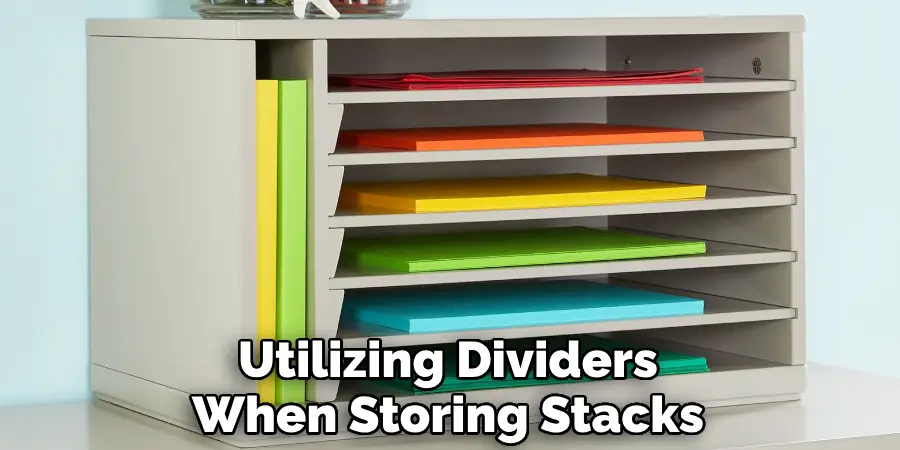
Riding it loosely around a tube or cardboard core for oversized paper can be an effective storage solution that conserves space while keeping the sheets immaculate. This method allows for compact storage without the folds that would come with traditional folding. Care should be taken to ensure that the roll is not too tight, which can cause crinkling along the edges.
It is also essential to advise against placing heavy objects on top of paper stacks as the weight can cause crushing and permanent indentations, rendering the paper less desirable for detailed artwork. By implementing these preventative strategies, the integrity of the construction paper’s surface and edges can be preserved, maintaining a pristine, ready-to-use condition for any crafting endeavor.
Extending Paper Lifespan: Avoiding Fading and Brittle Sheets
Prolonged exposure to light and heat can greatly accelerate the aging process of construction paper, causing its vibrant colors to fade and the sheets to become brittle. Ultraviolet (UV) rays, in particular, have a bleaching effect that strips away the brilliance of dyes. At the same time, heat can dry out the paper’s fibers, making them more susceptible to cracking and breaking. To ward off these damaging elements and extend the lifespan of paper, it is advisable to store crafting materials in cool, dark locations, such as closets or cabinets away from windows where sunlight cannot reach them.
Keeping construction paper in opaque storage containers can further safeguard against light exposure. If containers aren’t available, draping shelves or stacks of paper with thick fabric can create a protective shield from ambient light. Additionally, it’s imperative to avoid storing paper where temperatures fluctuate dramatically. Extreme variations in temperature can cause paper fibers to expand and contract, ultimately leading to a compromised structure and increased fragility over time. By maintaining a stable environment and minimizing exposure to harmful conditions, crafters can ensure that their paper remains robust and as colorful as the day it was purchased.
Additional Tips and Tricks: Maintaining Organization
A well-organized crafting area simplifies the creative process and enhances efficiency. Labeling storage containers and shelves is essential for easily identifying paper types and colors. Use clear, bold labels that are visible at a glance to eliminate any guesswork and facilitate quick retrieval. A color-coding system can be highly effective, assigning specific hues to particular paper categories. This visual arrangement aids in maintaining order and expedites the process of finding the right materials for every project.
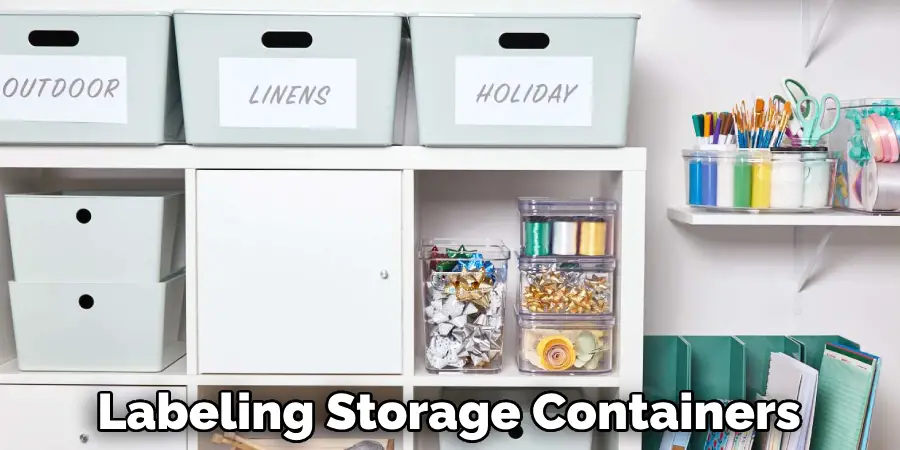
Consistent decluttering and rotation of paper stock can prevent the accumulation of unused paper that might otherwise be forgotten. This practice ensures that all supplies are utilized and exposures to new and diverse materials are encouraged. Regularly auditing your stock prevents the over-purchase of certain colors or types of paper while identifying gaps in your inventory.
Incorporating digital tools can transform the management of crafting materials. Maintaining a digital inventory list or taking photographs of your stock’s layout allows you to keep track of what you have on hand without physically sifting through materials. These tools can be particularly useful for planning projects, ensuring necessary materials are available, and reducing the excess purchase of supplies. With the aid of technology, managing your creative resources can become a streamlined process, allowing more time to focus on the art of crafting itself.
Troubleshooting Common Storage Issues
Even with preventative measures, storage issues like dust buildup, moisture damage, and warped paper can occur. Regular cleaning with a soft, dry cloth can keep dust at bay, while silica gel packets are great for combating moisture in storage areas. If the paper becomes slightly warped, try placing it under a flat, heavy object, like a book, for a period to help it flatten. Gently ironing on a low heat setting with a protective cloth can sometimes rescue mildly damaged sheets. Consulting a professional conservator is the best course of action for significantly damaged or valuable collections to ensure preservation and restoration are handled with expert care.
5 Benefits of Store Construction Paper
Crafting with construction paper is a timeless pastime for kids and a valuable teaching tool for educators worldwide. Its charming simplicity belies many benefits, making this humble material a staple in any educational or home setting. From fostering creativity to developing fine motor skills, here are five compelling reasons to keep a stack of construction paper handy for your next art project.
1. Versatility
At the heart of construction paper’s appeal is its chameleon-like versatility. This paper is a creative companion that can be folded, cut, glued, and shaped to meet almost any project’s requirements. From the genesis of the classic schoolhouse rock and the paper airplane to more advanced origami sculptures, construction paper adapts easily and gracefully.
Moreover, its straightforward handling means children of all ages can transform a simple sheet into delightful creations. Whether it’s a learning aid for a teacher or the material of choice for a child’s spontaneous craft, few supplies are universally useful.
2. Durability
One of the less celebrated attributes of construction paper is its durability. Despite often being mistaken for its delicate cousin, crepe paper, construction paper stands up to a remarkable amount of handling. This resilience is essential for young hands learning the intricacies of creating and refining their crafts, allowing them to correct and tweak without fear of their project falling apart.
For educators, this means less waste and a more cost-effective solution for stocking art supplies. Children are free to experiment within reason, confident that their efforts won’t be undone by an errant splash of glue or an imprecise fold.
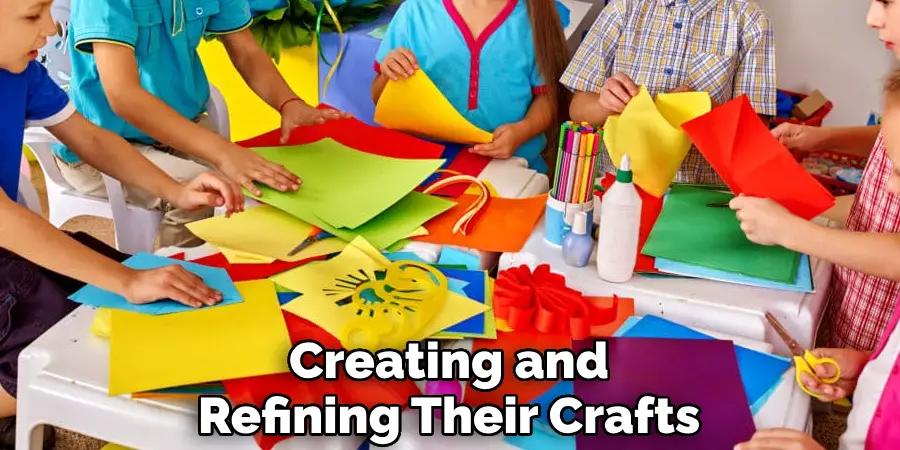
3. Vibrant Colors
Glancing at a stack of construction paper is akin to being a kid in a candy store. The vibrant spectrum of colors is an immediate draw, promising an array of options for self-expression. The bold hues are pleasing to the eye and serve as a boon for educators teaching about color theory or parents helping to develop a child’s understanding of the world.
In terms of art education, this is invaluable. From creating colorful collages to exploring the emotional impact of various shades, the accessibility of color via construction paper is a gift. Often in the juxtaposition and interplay of these colors, we see some of the most imaginative and moving works of art emerge.
4. Easy to Work With
There’s an inherent accessibility to construction paper that ensures it finds a place in classrooms focusing on art for all. It’s an ideal material for young children just getting their hands dirty in crafting, as it is easy to manipulate and essentially mess-free. There’s satisfaction in the simplicity of cutting along the straight lines and the successful execution of a fold.
For more experienced crafters, it becomes the canvas for more ambitious projects that require intricate cutting or sophisticated designs. In any case, the paper’s manageability allows for a wide range of creative freedom without the need for technical expertise, providing a gateway to the art world that’s open to everyone.
5. Educational Value
Beyond engaging a child’s imagination, construction paper is an invaluable tool for education. It helps develop fine motor skills through the precision required for cutting and folding. When used with other materials, it’s a stealthy introduction to engineering and design principles.
Through working with construction paper, children are also improving their problem-solving abilities. Each obstacle—a creased corner or a misaligned edge—is an opportunity to think critically and create innovative solutions. This application of creativity to overcoming challenges is the foundation for more complex problem-solving in the future, making construction paper a tool for making art and building minds.
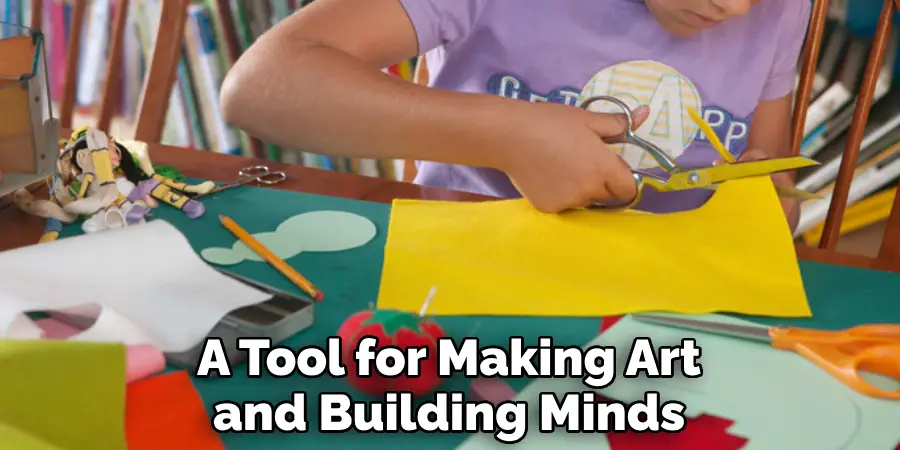
Conclusion
In conclusion, the vitality of your crafting begins with properly maintaining your construction paper. By keeping paper flat, safeguarding it from light and heat, and organizing your space, you enhance the longevity of your materials and the quality of your creative output. Embrace these storage practices; they are fundamental to maintaining a vibrant palette and sturdy sheets ready for your next creative endeavor.
Your dedication to preserving the brilliance of your craft supplies reflects your passion for art and responsible resource management. Thank you for your commitment to the wonderful crafting world and ensuring your creativity continues flourishing with each immaculate piece of construction paper. Thanks for reading our post about how to store construction paper.

